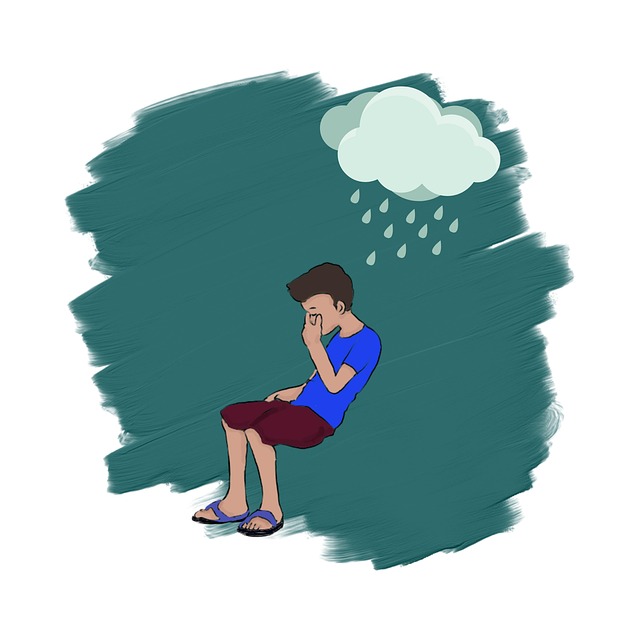Centennial Online Therapy emphasizes risk assessment as a cornerstone for therapists, ensuring safe and effective treatment through detailed client history evaluation, dynamic risk monitoring, and proactive crisis management. With virtual mental health practices rising, challenges like reduced empathy, technical issues, blurred boundaries, and burnout require robust policy analysis, advocacy, and comprehensive training in digital security, stress management, mindfulness, and privacy compliance. Best practices involve implementing strong security measures, regular software updates, HIPAA compliance, clear boundary setting, informed consent processes, and crisis intervention guidance to protect both clients and professionals.
In the rapidly expanding digital health landscape, mental health professionals are increasingly offering services through centennial online therapy platforms. However, this shift presents unique challenges and risks that require meticulous risk assessment. This article explores essential components of a comprehensive framework for evaluating these risks in virtual settings, focusing on strategies to ensure client safety and privacy in centennial online therapy. By understanding the unique hazards, therapists can navigate virtual environments with confidence and deliver effective care.
- Understanding Risk Assessment in Online Therapy Settings
- Unique Challenges and Risks of Virtual Mental Health Practices
- Essential Components of a Comprehensive Risk Assessment Framework
- Strategies for Mitigating Risks in Centennial Online Therapy
- Best Practices for Ensuring Client Safety and Privacy
Understanding Risk Assessment in Online Therapy Settings

In the realm of Centennial Online Therapy, understanding risk assessment is paramount to ensuring safe and effective therapy. As online therapy settings evolve, so do the potential risks associated with them. Mental health professionals must be adept at navigating these challenges, especially when working with individuals who may be more vulnerable or susceptible to crises. Risk assessment involves a comprehensive evaluation of various factors that could impact a client’s well-being during therapy sessions, including their current mental state, history of trauma, and access to support systems.
The process requires professionals to integrate Self-Awareness Exercises into their practice, enabling them to recognize potential red flags and anticipate crises. Moreover, staying informed about Mental Health Policy Analysis and Advocacy ensures that therapists are equipped with the latest resources and guidelines for managing risks effectively. Additionally, having Crisis Intervention Guidance readily available allows professionals to respond swiftly and appropriately when facing acute situations, enhancing overall client safety in online therapy settings.
Unique Challenges and Risks of Virtual Mental Health Practices

The shift to virtual mental health practices, popularized by services like Centennial Online Therapy, presents a unique set of challenges and risks for professionals in this field. One primary concern is the potential for reduced empathy and emotional connection between therapists and clients. The absence of face-to-face interactions can make it harder to read non-verbal cues and build the trust necessary for effective therapy. Additionally, technical issues with video conferencing platforms, internet connectivity, or data privacy breaches can disrupt sessions, leading to decreased patient satisfaction and potential harm to sensitive information.
Another significant risk is the blurring of professional boundaries. In virtual settings, therapists may struggle to establish clear limits with clients, potentially leading to unprofessional relationships. Moreover, the lack of physical separation between work and personal life can result in burnout as professionals may find it harder to practice effective self-care practices. These factors underscore the importance of robust mental health policy analysis and advocacy to ensure that virtual therapy services maintain the highest standards of care, incorporating empathy building strategies to mitigate risks associated with this evolving landscape.
Essential Components of a Comprehensive Risk Assessment Framework

A comprehensive risk assessment framework for mental health professionals is an indispensable tool to ensure the safety and well-being of both practitioners and their clients. Such a framework should include several essential components tailored to address the unique challenges in online therapy settings, like those offered by Centennial Online Therapy. Firstly, it must capture detailed client histories, including past traumas, psychiatric diagnoses, medication use, and current coping mechanisms. Understanding these factors is crucial for identifying potential risks and tailoring appropriate interventions, such as providing anxiety relief strategies or crisis intervention guidance.
Secondly, the assessment should incorporate dynamic risk evaluation, considering not only the client’s present state but also their trajectory over time. This involves monitoring changes in symptoms, behaviors, and emotional states. By integrating these elements, mental health professionals can proactively manage risks, ensuring that clients receive timely mental wellness support. Effective frameworks also emphasize ongoing communication and collaboration among team members to share insights and collectively address emerging concerns, thereby enhancing the overall quality of care delivered through online therapy platforms.
Strategies for Mitigating Risks in Centennial Online Therapy

In the realm of Centennial Online Therapy, mitigating risks for mental health professionals is paramount to ensure safe and effective treatment. Strategies for risk reduction begin with robust training in digital security protocols, emphasizing data encryption, secure video conferencing tools, and regular updates on cybersecurity best practices. This includes educating both therapists and clients about potential online threats, such as phishing scams and malware, fostering a culture of vigilance and proactive safety measures.
Furthermore, integrating Stress Management techniques tailored for online therapy sessions can significantly mitigate risks. Encouraging self-awareness exercises and mindfulness practices during virtual interactions helps maintain professional boundaries while promoting client well-being. Regular check-ins focused on Mental Health Awareness allow therapists to identify any emerging issues promptly, enabling early interventions that enhance overall therapeutic outcomes.
Best Practices for Ensuring Client Safety and Privacy

Mental health professionals have a profound responsibility to safeguard both client safety and privacy, especially within the digital landscape of Centennial Online Therapy. Best practices for ensuring these protections are multifaceted. Firstly, adopting robust security measures is paramount. This includes using encrypted platforms for therapy sessions, storing sensitive data securely, and regularly updating software to address potential vulnerabilities. Moreover, professionals should be trained in privacy laws and ethical guidelines, such as HIPAA (Health Insurance Portability and Accountability Act) in the US, ensuring compliance at every step.
Additionally, establishing clear boundaries and informed consent processes is vital. Clients must be fully apprised of their rights, including confidentiality, data usage, and the limits of online therapy. Mindfulness meditation techniques can help professionals maintain focus during sessions, enhancing presence and preventing burnout, which in turn improves client care. Crisis intervention guidance should also be integrated into practices, equipping therapists to handle urgent situations effectively while upholding privacy protocols.
In the rapidly expanding field of centennial online therapy, understanding and implementing robust risk assessment practices is paramount. By recognizing unique challenges and adopting comprehensive frameworks, mental health professionals can effectively mitigate risks while ensuring client safety and privacy. Integrating strategic precautions not only protects clients but also enhances the integrity of virtual mental health practices, fostering a secure environment for healing.













